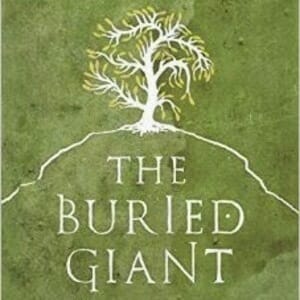
If you did a keyword search related to The Buried Giant, the most frequently used word would certainly be “departure.” It’s not off base; the world of this novel is not only temporally separated from those of Kazuo Ishiguro’s other books (The Buried Giant takes place in 6th-Century England, just removed from King Arthur’s reign), but physically removed as well. This England is one where magic and wonder sit comfortably alongside the mundane events of day-to-day life, to the point where the magical elements of the world inform the day-to-day. It’s a world only relatable in the terms of the people within it—a new direction for Ishiguro, whose navigation of the complexities of human interaction and emotion is so relatable as to be tangible in The Remains of the Day and Never Let Me Go. For this reason—the separation of the reader from a physical world in which he or she could relate to on a meaningful level—The Buried Giant will be labeled a “departure.”
Ishiguro is careful to balance the influence that this type of world can have on his characters, however, straying from a strict fantasy-adventure story through his continued emphasis on what it is to be human—no matter the place or time. From the onset of the novel, Ishiguro revels in the thematic element he’s explored for his entire career: the way that memory shapes our relationships with both the world and the people around us.
The Buried Giant ostensibly follows an elderly married couple, Axl and Beatrice, on a journey to visit their son in a distant village. Seeds of memory’s influence litter the novel from the beginning, with the narrator plainly remarking, “You may even wonder why Axl did not turn to his fellow villagers for assistance in recalling the past, but this was not as easy as you might suppose…. It simply did not occur to these villagers to think about the past—even the recent one.”
As the adventure progresses and the couple strays from their original goal of seeing their son, the novel reveals that our protagonists’ lost memories are the result of more than their aging minds. There is something in the air—quite literally—that clouds England, throwing the citizens’ pasts into a confusing state of fog while maintaining the peace in villages. Axl and Beatrice continually get derailed on their journey, finding themselves in a Saxon village, a forest with the last of King Arthur’s knights, a mountain peak monastery, a river with murderous pixies and a she-dragon’s lair. If it sounds convoluted, it’s because it is. For a while, anyway.
The characters introduced along the way – a Saxon warrior, Arthurian knight Sir Gawain, even the she-dragon Querig—appear to serve as roadblocks for Axl and Beatrice on their journey. But, in fact, they represent something far deeper: lost memories and the ways they can return to our consciousness like long-forgotten acquaintances.
Axl and Beatrice wrestle with dreams and memories—and recognizing the line between the two—and the narrative does the same for the reader. There are numerous scenes where you’ll believe you’re witnessing the confusion of two elderly minds, yet the marriage of fantasy and reality illuminates both realms.
Beatrice asks Axl if he fears what his memories will reveal, which pinpoints the core issue at work in The Buried Giant—the buried giant itself. Axl and Beatrice wander a landscape filled with ogres, dragons, knights, kings and even giants, but the titular buried giant is the giant of memory that informs how one experiences the world. The novel asks, and ultimately answers, what will happen when the giant is exhumed? Ishiguro’s Beatrice plainly and elegantly speaks on the issue, saying that a story possessing terrors within can’t be a terrible story if it has a happy end.
Jeff Pearson lives and writes and Atlanta, Georgia. He’s the founder of Tactile Tracks as well as a regular contributor to various blogs.